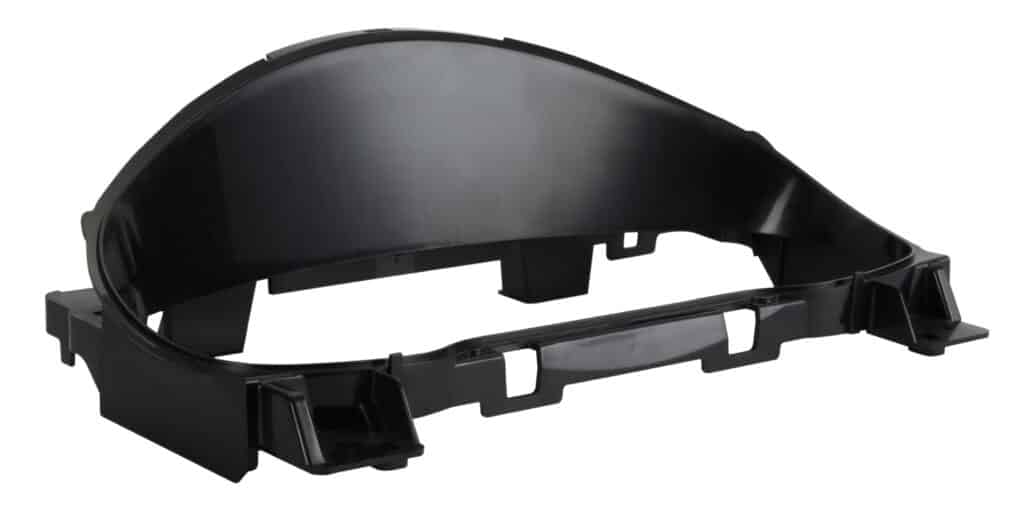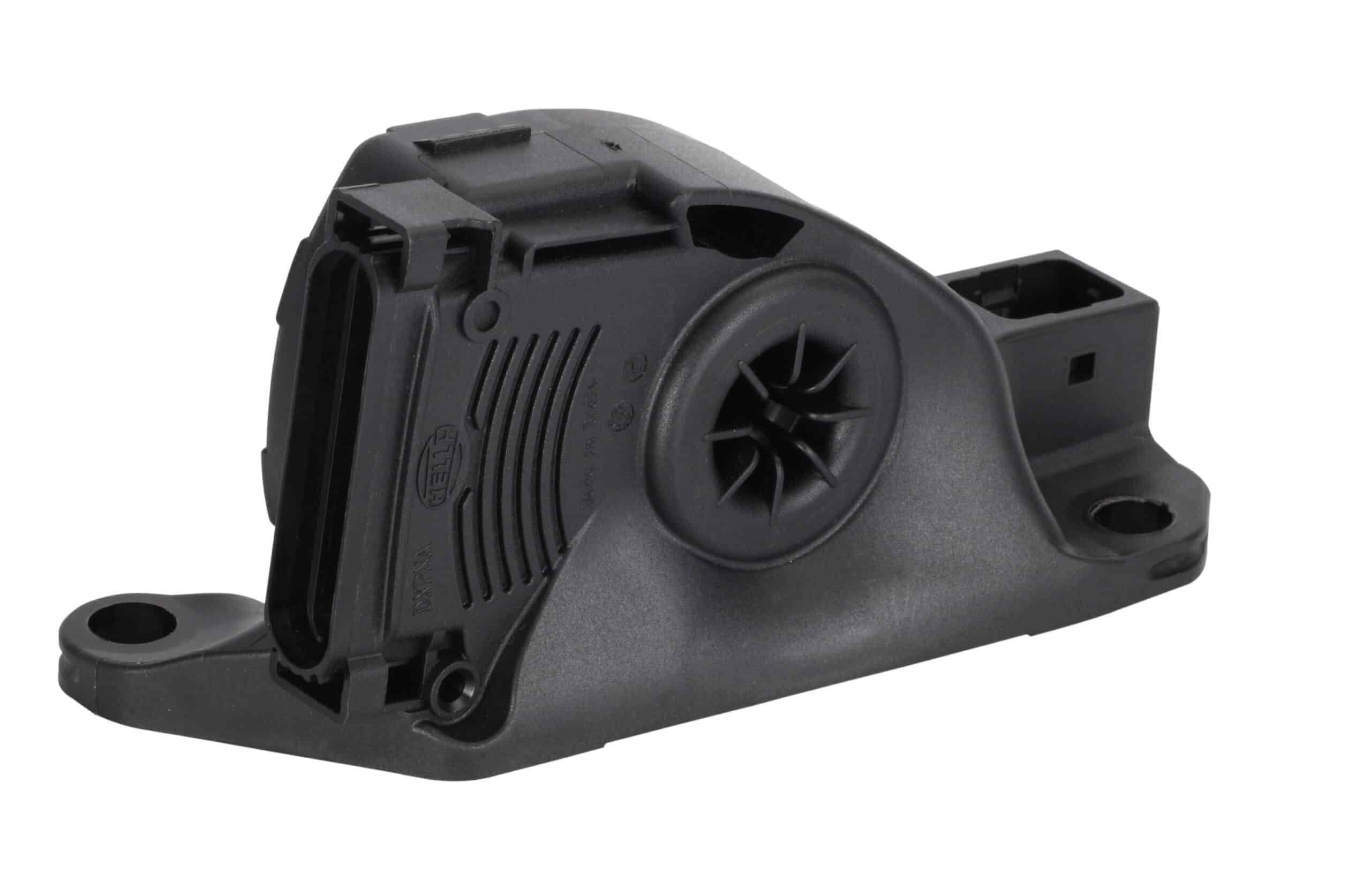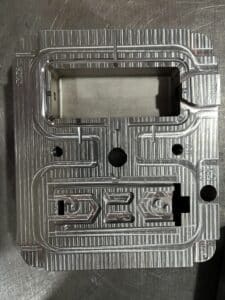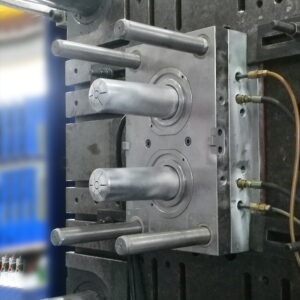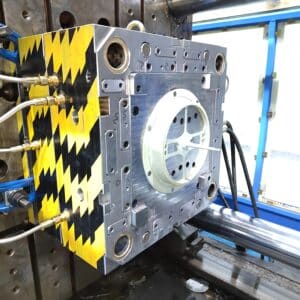Flap edge, also known as flash, overflow, overflow, etc., mostly occurs in the opening and closing position of the mold, such as the parting surface of the mold, the sliding part of the slider, the gap of the insert, the hole of the ejector pin, etc. If the overflow is not solved in time, it will be further expanded, resulting in local collapse of the impression die, causing permanent damage. The flapping edge of the insert gap and the ejector pin hole will also make the product stuck on the mold, affecting the demoulding.
There are four places where the plastic injection mold is most easy to run
1. Flare of parting surface
The flying die is not in place, dislocated, the injection pressure and plastic are too large, and the mold adjustment is too loose.
2. Ejector tip
In mold production, because of the frequent activities of the thimble, the thimble hole is easy to wear and grind, resulting in clearance.
3. Position Pifeng
Each row position has a supporting shovel level that moves as frequently as the thimble. It is also the most worn part. If the shovel level is not worn, the product will be flaring.
4. Puncture flaring
The die steel is easy to stay and deform without hardening.
Only when we strictly control the quality problems in these four areas during mold design and manufacturing, can we effectively control Feifeng in the later production of products.
Pifeng is essentially the excess left on the product after the gap between the plastic material and the matching part of the mold is cooled. To solve the problem of flaring, it is very simple to control that the melt does not enter the die fit gap. There are generally two situations when plastic melt enters the mold fitting clearance: one is that the mold fitting clearance is already large, and the colloid is easy to enter; Another situation is that the die fit gap is not large, but it is forced to break in due to the pressure of molten colloid.
On the surface, Pifeng seems to be able to completely solve the problem as long as the manufacturing precision and strength of the mold are strengthened. It is absolutely necessary to improve the manufacturing accuracy of the mould, reduce the fitting clearance of the mould and prevent molten colloid from entering. However, in many cases, the strength of the mold cannot be infinitely strengthened. Under any pressure, the colloid cannot protrude into it.
The emergence of Pifeng is due to both mold and process. Check the causes of the process, first check whether the clamping force is sufficient. Only when the clamping force is sufficient and the flaring still occurs, check the causes of the mold.
Method to check whether the clamping force is sufficient:
1) Gradually increase the injection pressure. With the increase of injection pressure, the flaring edge also increases correspondingly, and the flaring edge is mainly generated on the parting surface of the mold, indicating that the clamping force is insufficient.
2) Gradually increase the clamping force of the injection molding machine. When the clamping force reaches a certain value, the flaring on the parting surface disappears, or when the injection pressure is increased again, the flaring on the parting surface does not increase. It is considered that the clamping force is sufficient.
Method for checking whether the flaring is caused by mold manufacturing accuracy:
Fill the product with low material temperature, low filling speed and low injection pressure (the product shrinks slightly). At this time, it can be considered that the ability of the melt to protrude into the die fit gap is very weak. If the flaring occurs at this time, it can be judged that it is a problem of die manufacturing accuracy and needs to be solved by die repair. It can be considered to give up the use of technological methods to solve the problem. It should be noted that the above “three low” conditions are indispensable. High material temperature, fast filling speed, and high injection pressure will lead to an increase in local pressure in the mold cavity, enhance the ability of the melt to protrude into the mold fitting gap, and expand the mold to produce a tip, although the product is not satisfied with the glue at this time.
The analysis of the causes of flapping is based on the premise that the clamping force is sufficient. When the clamping force is insufficient, it is difficult to analyze the causes of flapping. The following analysis is based on sufficient clamping force. According to several situations of the appearance of the flapping front, the flapping front may be caused by the following reasons:
The first case: as mentioned above, under the conditions of low temperature, low speed and low pressure, when the product is not satisfied with the glue, the tip has been generated. The main reasons are: the mold manufacturing precision is not enough, and the fit clearance is too large;
The second case: when the product is just full of glue, there is shrinkage in some parts, and there is no sharp edge; When the injection pressure is increased and the local shrinkage of the product is improved, the edge is formed. Possible causes are:
1) The material temperature is too high. If the material temperature is too high, the viscosity of the melt is low, and the fluidity is good, the stronger the ability of the melt to protrude into the fitting gap of the die, the more will lead to the formation of the tip.
2) The injection speed is too fast and the injection pressure is too high (leading to over saturation of filling). Too fast speed, too large injection pressure, especially too large injection pressure, will enhance the ability of the melt to protrude into the mold fit gap, leading to the formation of flaring.
3) The fluidity of plastic is too high. The better the fluidity of the plastic, the lower the viscosity of the melt, and the stronger the ability of the melt to drill into the fitting gap of the mold, it is easy to produce a flapping edge. When the mold production has been completed, the depth of the exhaust slot of the mold and the fit clearance of the mold have been finalized, and another plastic with good fluidity is used for production, it will produce a flaring edge.
4) The strength of the die is insufficient. When the design strength of the mold is insufficient, when the mold cavity bears the pressure of the plastic melt, it will deform and expand, and the colloid will protrude into the gap of the mold, resulting in a flaring.
5) The product design is unreasonable. The local rubber position of the product is too thick, and the excessive shrinkage during injection molding will lead to local shrinkage. In order to adjust the local shrinkage of the product, it is often necessary to fill and maintain the pressure with a higher injection pressure and a longer injection time. As a result, the mold is not strong enough to deform, resulting in a flaring edge.
6) The mold temperature is too high. High mold temperature can not only keep the plastic flowing well, but also reduce the strength of the mold with small pressure loss, which will also lead to the formation of flaring.
The third situation is the most common problem encountered in injection molding production, which can not be solved by all process methods, and is the biggest problem for injection molding technicians. In this case, the main method is to repair the mold. The solutions are:
1) Partial glue reduction of the product. Reduce the glue on the part of the product shrinkage. After the glue level is reduced, the product shrinkage can be improved, the injection pressure will be reduced, the mold deformation will be small, and the flaring will be restrained. This is the most effective and commonly used method.
2) Add glue feeding point. Increasing the injection point can reduce the injection process, reduce the injection pressure, and reduce the pressure on the mold cavity, which can effectively solve the problem of flaring. Increasing the pouring point, especially at the product shrinkage position, can have an immediate effect on reducing the injection pressure of the mold cavity. It is also one of the commonly used means.
3) Strengthen the mold locally. Sometimes the deformation of the formwork can be strengthened by adding a support head between the movable formwork and the ejector plate.


